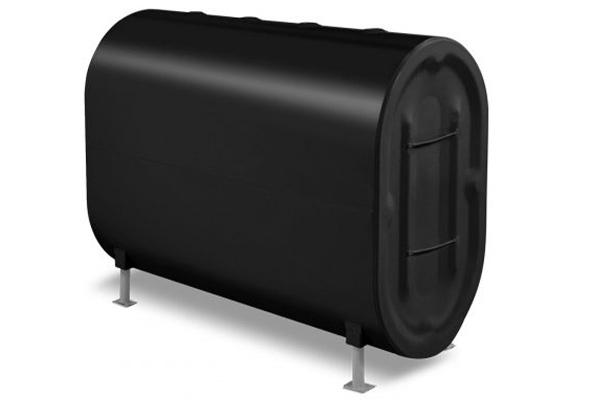How Does Water Get Into An Oil Tank?
 Water in your home heating oil tank is something that all homeowners should be proactive in preventing. This is because it can damage the heating oil tank and your heating system. Unfortunately, you might already have this problem right now without realizing it. The first few stages have no obvious signs, and your system might already be gravely affected when signs start to crop up. Therefore, to avoid contamination, such as water in oil tank, you need to check for water or sludge in your fuel oil tank regularly.
Water in your home heating oil tank is something that all homeowners should be proactive in preventing. This is because it can damage the heating oil tank and your heating system. Unfortunately, you might already have this problem right now without realizing it. The first few stages have no obvious signs, and your system might already be gravely affected when signs start to crop up. Therefore, to avoid contamination, such as water in oil tank, you need to check for water or sludge in your fuel oil tank regularly.
Read on to find out how water gets into your oil tank and why this is a cause for concern.
Why Is Water In The Oil Tank?
Water is an inorganic substance that can be found in almost all types of environments. After all, it can be found in the air as water vapor. You might not see it, but you can feel the humidity in the air. Water vapor can get in if the fill hole in your tank is open for too long, if the cap is ill-fitting, or it does not screw properly. Rainwater can also trickle into your tank through holes, gaps, damaged vents, loose inspection lids, and corroded seals.
Why Is Water A Problem For My Heating Oil Tank?
 Water is a nourishing substance for humans. However, it can be damaging to machines. Once it gets inside your tank and heating system, it can wreak havoc unless you do something about it. The more water there is, the more problems you’ll have. It can even reach the fuel line, where the water might freeze when the winter arrives. The frozen water will block the fuel supply, and you won’t be able to use your system. Water in the tank also promotes rust, which will corrode it. Holes will develop, and oil can leak through them. It also forms a sludge that can damage your boiler as time passes.
Water is a nourishing substance for humans. However, it can be damaging to machines. Once it gets inside your tank and heating system, it can wreak havoc unless you do something about it. The more water there is, the more problems you’ll have. It can even reach the fuel line, where the water might freeze when the winter arrives. The frozen water will block the fuel supply, and you won’t be able to use your system. Water in the tank also promotes rust, which will corrode it. Holes will develop, and oil can leak through them. It also forms a sludge that can damage your boiler as time passes.
How Do I Know If There Is Water In The Oil Tank?
Water in your oil tanks should never happen. Therefore, it is a must to conduct regular checks. See if there are any holes, cracks, or broken seals where water vapor can seep through. If you want to know if water is already in your tank, you can use a water-finding paste. This product is applied at the end on a long stick. Lower this stick carefully inside your tank and let it sit at the bottom for a couple of minutes before pulling it out. If the paste changes color, it means that it touched water inside your oil tank.
How Do You Get Water Out Of A Residential Fuel Tank?
 When you are sure that there is water in your fuel oil tank, you need to eliminate it right away. How you will do so is dependent on the volume of water in it and the kind of tank you have. Keep in mind that an expert should handle severe problems. The water taken from your oil tank should be disposed of correctly as well and not just flushed down the drain. Ask a professional to help you with the task, so everything goes smoothly and without much hassle.
When you are sure that there is water in your fuel oil tank, you need to eliminate it right away. How you will do so is dependent on the volume of water in it and the kind of tank you have. Keep in mind that an expert should handle severe problems. The water taken from your oil tank should be disposed of correctly as well and not just flushed down the drain. Ask a professional to help you with the task, so everything goes smoothly and without much hassle.
Here are the two types of tank you might be dealing with:
Metal Oil Tank
 If you own a metal tank and the water volume in it is only about an inch deep, you might be able to remove the water on your own. First, search for the sludge valve at the tank’s bottom. Turn it carefully to let the water drain. Make sure to handle it as delicately as possible so that oil will not escape from your tank. Close it as soon as all the water has been drained. Remember that it is always a good idea to leave this task to professionals. Otherwise, you might end up causing more problems if you do not know what you are doing.
If you own a metal tank and the water volume in it is only about an inch deep, you might be able to remove the water on your own. First, search for the sludge valve at the tank’s bottom. Turn it carefully to let the water drain. Make sure to handle it as delicately as possible so that oil will not escape from your tank. Close it as soon as all the water has been drained. Remember that it is always a good idea to leave this task to professionals. Otherwise, you might end up causing more problems if you do not know what you are doing.
Plastic Oil Tank
A plastic fuel tank might not be equipped with a sludge valve. If this is the cause, you might have to remove the water using a hand pump. Do not attempt doing so if you do not know how to use it and let a professional handle the problem. You can also use a specially treated material to absorb the water in your tank. These have chemicals that allow them to soak up the water efficiently.
Another strategy is to use a weighted tank sponge. All you need to do is drop it into the tank, where it will quickly sink to the bottom where the water is. It is equipped with a recovery string that allows you to retrieve the sponge once it is full of water. However, it is always best to call an HVAC expert specializing in fuel delivery to help you.
Removing Water From An Underground Oil Tank
Having an underground oil tank means that it is more challenging to remove the water inside of it. Some homeowners opt to utilize a hand pump. However, it can lead to more problems if you are not careful. Call a professional instead so that you know the task is done promptly, safely, and without any mess.
Preventing Water In Your Fuel Oil Tank
Temperature fluctuations can lead to problems with your heating oil tank. Cover it with insulation to prevent condensation from forming along the tank walls. Do not let it go empty as well. Call for a fuel delivery when your tank is half full. Ensure that a reputable heating oil company delivers top-quality fuel and keeps your tank in tiptop shape at all times.
Call R.F. Ohl for Solutions to Ensuring Comfort in Your Home

If you need to have heating oil delivered to your house, call R.F. Ohl. Our prices for quality discounted heating oil are the best. We also offer efficient heating solutions for your family and home.
The expert technicians on our team are equipped to handle any HVAC repair or maintenance. Contact us to hear about our various services. We can assist by answering your questions and concerns. For more information about our efficient HVAC services or oil deliveries, call R.F. Ohl today!
Call us today to learn more. Click here or call us at (610) 377-1098 to contact us today!
Posted in Heating Oil • Tags: checking for water in oil tank, condensation on outside of oil tank, how to detect water in oil tank, how to test for water in oil tank, oil tank shelter, oil tank sludge, rain water in oil tank, water in oil tank heating, water in oil tank home heat, water in oil tank problem, water in residential oil tank
